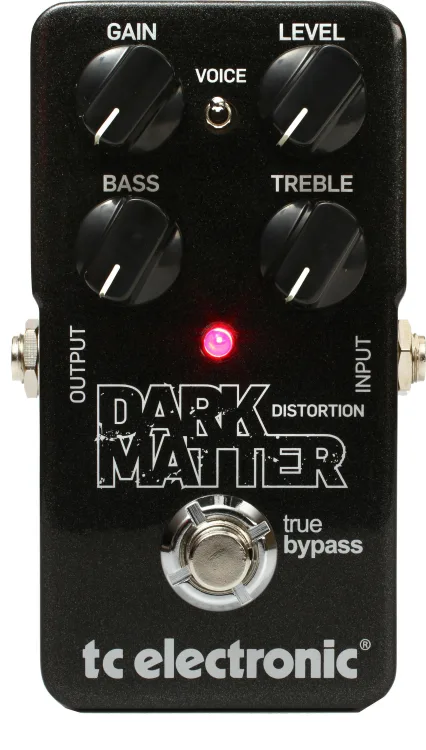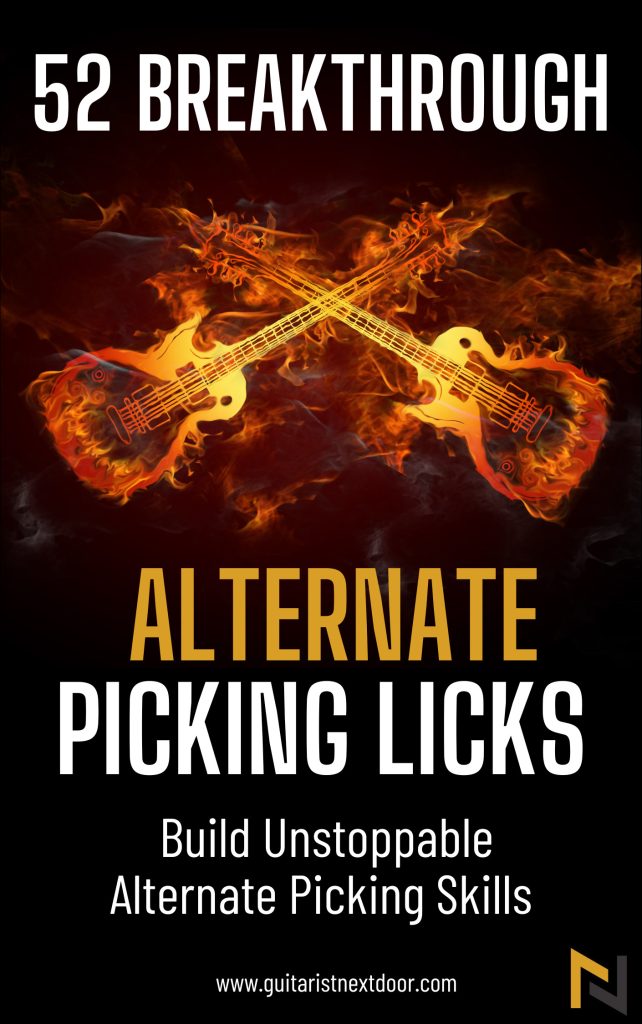I know, you want to nail your tone. It has to be just right. And you know what makes a huge difference? Choosing this right: distortion or overdrive pedal?

Author: Tyler Connaghan
Tyler Connaghan is a guitarist, singer, producer, composer & engineer based in Los Angeles, California. Tyler has been playing the guitar since 2007. In between writing for guitar publications, he produces music for film and television. His favorite axe is his custom Pelham Blue Fender Stratocaster.
Expertise: music industry, producing, acoustic & electric guitars, songwriting
Bachelor of Science in Music Industry Studies, Music Industry

Editor: Edward Bond
Edward has been playing the guitar since 2002. So Edward has over 20 years of experience as a guitarist, has authored 15 guitar books, has written for renowned music blogs, and spent a decade teaching music. He began merging his passion for writing and music in 2020 and has written for big guitar websites such as Guitar Head Publishing and KillerGuitarRigs.com.
Originally from Seattle, Edward moved to Norway in 2021 for a master’s in music. He’s studied at the Jazz Institute Berlin and Conservatorium van Amsterdam, and currently resides in Trondheim. His education includes a European Jazz Master’s, a diploma in Film and Game Scoring from Sofia, and a Bachelor’s in Jazz from University of Oregon.
Edward has played in numerous bands and currently, Edward works on his own project Starship Infinity
Unfortunately, most “answers” that exist tend to leave guitarists more confused than when they first asked. Plus, the waters are murkier than ever with the ever-growing array of overdrive, distortion, fuzz, and boost pedals on the market.
As a long-time guitarist and pedal enthusiast, I want to clear the fog today and tell you all you need to know about the differences between these two styles of harmonic generation in this distortion vs. overdrive guide.
Summary (if you’re in a hurry!)
Quick demo comparing clean, distortion, overdrive, and fuzz:
Key Differences Between Distortion and Overdrive Pedals
| Distortion | Overdrive | |
|---|---|---|
| Gain Style | More heavily-clipped and saturated sound with heavy compression | Smooth, soft-clipped sound that mimics a cranked tube amp |
| Dynamic Response | Very compressed dynamic range, making them better for sustain and dynamic consistency | More responsive to dynamics with smooth clipping style |
| Style | Better for heavier styles of music, including rock, metal, and punk | Better for music that requires a more natural breakup, such as blues and classic rock |
When to Use a Distortion Pedal?
- When you want a heavily clipped or aggressive tone.
- When you want something that can produce a fair amount of gain on its own.
- When you want a greater degree of tonal flexibility.
- When you want a super consistent dynamic response with lots of sustain.
- When you play heavier genres, such as rock, metal, or punk.
Imagine Having The Technique, Gear, and Sound of The GOATS… But Don’t just imagine. Find out.
Joe Satriani
Main Band
Solo Artist
Main Guitar
Ibanez Joe Satriani Signature JS2480
Joe Satriani
| Uniqueness | (4.5) |
| Accuracy | (5.0) |
| Speed | (5.0) |
| Right Hand | (5.0) |
| Techniques | (5.0) |
| Versatility | (3.5) |
| Performance | (4.5) |
| Overall Lead | (5.0) |
| Overall Rhythm | (4.5) |
Tommy Emmanuel
Main Band
Solo Artist
Main Guitar
Maton TE Personal
Tommy Emmanuel
| Uniqueness | (3.5) |
| Accuracy | (4.5) |
| Speed | (5.0) |
| Right Hand | (5.0) |
| Techniques | (5.0) |
| Versatility | (4.0) |
| Performance | (4.0) |
| Overall Lead | (5.0) |
| Overall Rhythm | (5.0) |
Steve Vai
Main Band
Solo Artist
Main Guitar
Ibanez Steve Vai JEM77
Steve Vai
| Uniqueness | (4.5) |
| Accuracy | (5.0) |
| Speed | (5.0) |
| Right Hand | (4.5) |
| Techniques | (5.0) |
| Versatility | (3.0) |
| Performance | (4.5) |
| Overall Lead | (5.0) |
| Overall Rhythm | (4.5) |
When to Use an Overdrive Pedal?
- When you want a softer or smoother tone that mimics the sound of a driven tube amplifier.
- When you want something that can stack well with your amp’s natural overdrive.
- When you want something with less tonal flexibility yet more transparency.
- When you want something with a better dynamic response and better touch sensitivity.
- When you play more natural styles like blues or classic rock music.
What is Distortion?
In audio, distortion is when we alter or deform the original waveforms of audio signals. It’s important to note that there are different kinds of distortion out there, and some of the most popular include:
- Harmonic Distortion: This is when you add more of or enhance the overtones of a clean signal, as you would with analog components like tubes or tape.
- Clipping: When you clip a sound, you overload it past its maximum capacity. This also results in harmonic distortion and can make a sound feel louder than it is without needing more headroom.
How Does Distortion Work?
Distortion takes a symmetrical sound wave and clips the symmetrical peaks on the bottoms and tops. The softer the peaks are clipped, the softer the distortion, and the harder the peaks are clipped, the more brutal the distortion becomes (entering fuzz territory). That’s the basic hard clipping vs. soft clipping explanation.
It’s also worth noting that you get additional harmonics or harmonic overtones when audio signals get clipped. Without getting too deep into the science, overtones are essentially frequency multiples of the original signal frequency.
The result?
A more harmonically complex sound.
Distortion also goes hand in hand with compression, reducing the dynamic range by bringing the softer parts of the signal up and the louder parts down. Many distortion pedals use soft limiting to shave off peak transients and give us that excellent sustain.
How To Use Distortion?
There are so many ways to use distortion in your playing that it would be impossible for me to list them all, though the beauty of distortion is that it comes in many forms. You can use a stompbox, an amp with built-in distortion effects, or a software plugin that mimics the characteristics of the effect.
Check out our list of the best metal amps under $500 for a few solid options.
As I said before, distortion is excellent for heavier genres and is great for dialing in heavy metal tones with lots of sustain and grit. I recommend experimenting with different distortion pedals to see how they react with how you play, what gear you use, and what sound you’re ultimately after.
Famous Songs That Use Distortion
Jimi Hendrix – Foxy Lady
It’s hard to talk about famous songs that use distortion without talking about iconic artists like Jimi Hendrix, who often used distortion in his records, especially “Are You Experienced?” This track is one of the best examples of distorted guitar on that album.
The Beatles – Revolution
In 1968, the Beatles were in a heavy experimental phase, constantly looking for new sounds they could craft from their time in the studio. The distorted guitar tone on “Revolution” resulted from the band running or DI’ing the guitar signal into the mixing console and driving the input until it was almost completely overloaded.
Queens of the Stone Age – My God Is The Sun
Queens has long been one of my favorite bands, and whenever I want to crank my amp and get nasty with distortion, I often turn to their songs. “My God Is The Sun” is an excellent example of all the wild and wacky distortion tones you can achieve with experimentation.
What is Overdrive?
Guitar pedal manufacturers began developing overdrive pedals to mimic the reaction that tube amps have to be cranked. As they say, when you send more power to a tube amp than it can handle cleanly, you are “overdriving” it.
Amplifiers get the overdriven timbre we all know and love when we feed them so much power that they clip. However, overdrive pedals can also give you the sound of when you crank a tube amp up as loud as it will go. The great thing is that we can get this clipped sound without getting a nasty call from our neighbors, as it allows us to play at low volumes.
How Does Overdrive Work?
For the most part, overdrive works by increasing the gain of the input signal to clip or saturate it before sending it out to be amplified. Inside overdrive pedals, you’ll often find components like diodes and op-amps responsible for amplifying and shaping the output tone. In doing so, they introduce harmonic saturation, giving you a more tonally complex sound.
How To Use Overdrive?
There are many ways to use overdrive when playing, and many guitarists forego pedals altogether, instead opting to push their tube amps hard enough so that they overdrive on their own.
While many players use overdrive to get a bit of extra saturation and grit, you can also use it to boost the volume on your guitar while keeping the original tone of your amp.
With all that said, if you want to get the most out of an overdrive pedal, I recommend using a tube amplifier, as many of these pedals are manufactured to push your tubes hotter at a lower capacity.
Famous Songs That Use Overdrive
Cream – Sunshine of Your Love
The guitar tone on “Sunshine of Your Love” might epitomize the overdriven classic rock tone. It’s warm, and buttery yet has just enough edge to lift it into a higher energy echelon.
AC/DC – Back In Black
Angus Young had a way of delivering guitar tones that felt like a slap in the face (in the best way possible), and much of his tone in Back In Black came from driving Marshall amplifiers as hard as he could.
Lynyrd Skynyrd – Sweet Home Alabama
You can probably almost hear the intro riff in your head without even listening to the song, and that twangy, chicken-pickin’-style guitar riff results from just a touch of overdrive and a lot of southern grease.
Distortion vs Overdrive: Which One Works The Best For You?
There are so many things to consider when buying a new pedal, and when you’re trying to nail down a sound that you have in your head, knowing what kind of variables can impact that sound is essential.
Let’s look at a few factors you should consider when choosing between a distortion and an overdrive pedal.
Your Setup
One of the first things you should look at is your amp. I’ve always preferred how overdrive pedals sound with tube amplifiers, as they can push tubes nicely and maintain a dynamic response. On the other hand, if you have a solid-state amp, you might consider going with a distortion pedal, as these two often work better in tandem with one another.
That said, nothing is black and white. For example, you might have a tube amp with plenty of natural overdrive, so instead of more of the same thing, you can stack it with a distortion pedal for a bit of added aggression.
I’d also recommend considering what kind of guitar you have. For example, a Gibson Les Paul or a general metal guitar will play more nicely with a heavy distortion pedal than a Fender Stratocaster with single-coil pickups, as it will produce less buzz in your amp.
However, a single-coil Fender, which is an excellent choice for blues thanks to its dynamic design, would likely work better with an overdrive if a dynamic response is what you’re after.
Your Style
Distortion pedals tend to feed the desires of guitarists who play high-gain, saturation-forward genres, such as metal, punk, or heavy rock. With distortion, you get plenty of sustain and intensity.
On the other hand, if you like more natural styles of playing, such as classic rock or blues, or you want a smoother, warmer, and more dynamic tone, you might consider going with an overdrive pedal.
Your Flexibility
One of the significant benefits of distortion pedals is that they more often have precise EQ controls on them, giving you more opportunity for comprehensive tone-shaping. Now, that can also add to the complexity of some of the more in-depth distortion pedals on the market, which is why I always recommend beginners starting out with overdrive pedals.
Using Both Distortion and Overdrive Together?
For the most part, guitarists won’t choose one effect or the other, as you can get endless tonal possibilities by pairing overdrive and distortion with one another.
Stacking overdrive and distortion pedals can give you thicker, higher levels of saturation overall. If you play heavy rock or metal, you can dial in an ultra-heavy tone distinct from your average fuzz pedals.
One great example of this comes from Randy Rhoads, one of the greatest metal guitarists ever. His high-gain tone in Ozzy Osbourne’s “Crazy Train” came from dialing in a slight bit of overdrive on his Marshall while generating most of the distortion with his MXR Distortion +.
In other cases, I’ll often place my Sweet Honey Overdrive pedal after my MXR distortion pedal to shape the tone from one pedal to the next. For example, if I want to alter the characteristics of my distortion, I’ll dial back the tone on the overdrive pedal to make it warmer.
Sometimes, an overdrive pedal can help you get a more dynamic response from your distortion pedal. You can roll back the volume on your guitar and hit your distortion pedal with less input yet still get a similar, smooth level of crunch with both activated.
Distortion or Overdrive First?
This is the holy grail question regarding guitar pedalboards and one that everyone has a different opinion on.
When an overdrive pedal is stacked before a distortion pedal, it thickens the tone and saturates the input of the distortion pedal. I’ll sometimes use a Tube Screamer, a mid-forward overdrive, going into a distortion pedal to push the mids on my distortion more heavily. The result is a very present tone that cuts through a mix like warm butter.
On the other hand, if you place an overdrive pedal after a distortion pedal, you’ll boost the signal and can modify the sound of the effect. It’s great for when you want to warm up an otherwise cutting distortion yet still want the high level of sustain it provides.
Fuzz: Is It Different Than Overdrive or Distortion?
In the great distortion vs. overdrive vs. fuzz debate, fuzz is its own beast. Instead of gradually clipping the soundwaves from top to bottom like overdrive and distortion, fuzz uses heavy clipping techniques that are far more robust, focusing heavily on the mids.
In terms of how it sounds, the rich overtone destruction gives it a less defined characteristic. Yet, you also get an insane level of sustain and compression, which makes it perfect for heavier playing styles.
The first fuzz pedals, born in the ’60s, were made to imitate the sound of something broken or malfunctioning in the signal chain. There are many styles of fuzz pedals that use different transistors, from germanium to silicon.
The unique thing about transistors, as opposed to op-amps we often find in other guitar effects pedals, is that they are relatively lo-fi and desecrate input signals with loads of harmonics, creating those nasty square waves we know and love.
The Best Distortion Pedals – Our Favorites
Empress Effects Heavy Menace
*Consider all links in this post to be affiliate links. If you purchase, at no additional cost to you, we may earn a small commission. It helps us to keep the lights on, thanks! 🙂
If you’re looking for a pedal that can give you extremely high-gain sounds and plenty of versatility, look no further than Empress Effects’ Heavy Menace.
While it may be relatively pricey, you can get just about any style of distortion out of this thing, from light, overdrive-style tones to full-on metal.
TC Electronic Dark Matter
Dark Matter beautifully bridges the gap between modern and classic tones, giving you a simple interface of controls and a versatile palette that moves from smooth vintage overdrive to amp-shaking crunch, perfect for palm mutes and pick slides.
MXR Distortion +
This pedal was one of my first and is still one of my absolute favorites for classic distortion tones. Plus, it’s the perfect touring companion with only two knobs and a tank-like chassis.
The Best Overdrive Pedals – Our Favorites
Ibanez TS808 Vintage Tube Screamer
The Ibanez TS808 Tube Screamer is probably the most famous overdrive pedal ever. Even though the first iteration of this pedal was released in the 1970s, it’s still used by professional players worldwide.
The beauty of this pedal, beyond its sound, is its simplicity. You only have a few controls on the interface, including overdrive, tone, and level, making it easy to dial in driven sounds in a pinch.
Boss SD1 Super Overdrive
Another iconic yet more budget-friendly overdrive pedal is the Boss SD-1 Super Overdrive. You get the natural distortion and warmth of an overdriven tube amp with a design that responds beautifully to even the slightest dynamic changes in your playing.
It’s hard to think of a better pedal in this price range that can add drive to your sound without sounding over the top.
Plus, like other Boss stompboxes, the SD-1 is built like an absolute tank, making it the perfect touring companion.
Wampler Tumnus Deluxe
If you’re like most guitarists out there, the idea of going into debt to put an OG Klon Centaur on your pedalboard probably won’t sit right with you. Luckily, plenty of high-end clones are on the market, and one of the better units, in my opinion, is the Wampler Tumnus.
Not only is this one of the most faithful, quality-sounding reproductions of what might be the most challenging overdrive pedal in the industry to obtain, but it’s also highly portable, thanks to the 1590A enclosure, meaning you won’t have to sacrifice a ton of real estate on your pedalboard.
While many people describe the Wampler Tumnus as “transparent,” I’ve always found it sounds a bit rubbery when driven at low gain settings and dry and crunchy when turned up high.
Conclusion
When all is said and done, any tonal debate we may have is entirely subjective. Whatever feels and sounds best to you is the correct answer, no matter what some dude online might tell you.
Don’t be afraid to experiment with different forms of overdrive and distortion, as you may find a magical sound that’s all your own!
FAQ
Is It Better To Practice Guitar With Distortion or Without?
One of the main benefits of practicing with distortion is that it amplifies your mistakes and makes them much easier to hear. When your mistakes are exposed, you can correct them quicker before creating bad habits.
Can Overdrive Be Used As Distortion?
One could argue that overdrive is a form of distortion, though with that said, most overdrive pedals are made to sound more natural, driving the input like a guitar would an amp. In contrast, distortion often imparts its own tone overall.
Does the Compressor Go Before or After Overdrive and Distortion?
Most guitarists will place compressor pedals before overdrive and distortion to send a stronger and more consistent signal to their effects.
Is Tube Screamer Overdrive or Distortion?
The Ibanez Tube Screamer is one of the most iconic overdrive pedals around, using a style of soft-clipping that adds tons of mid-range to the signal.
Can You Stack Overdrive and Distortion?
Absolutely! Many guitarists will use these effects in tandem with one another to achieve more harmonically complex styles of gain.
Is Overdrive or Distortion Better for Metal?
While you can use distortion or overdrive for metal, most metal guitarists will use distortion for their tones, as it provides more consistency, gain, and tonal control.
Did Kurt Cobain Use Distortion or Overdrive?
The Boss DS-1 was the main element in Kurt Cobain’s signature sound, which has become an extremely popular yet affordable distortion pedal.
Did Eddie Van Halen Use Overdrive or Distortion?
Eddie Van Halen rarely relied on distortion pedals, if ever. In fact, it was his mix of sound modulation pedals and amp settings that created his famous “brown sound.” With that said, you can use either distortion or overdrive for rock tones like his.





















